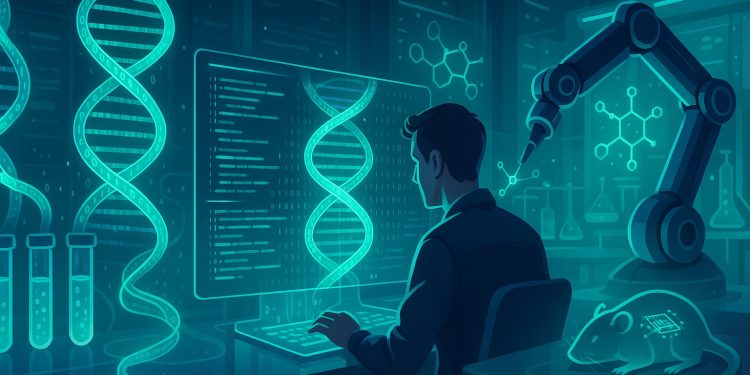The world of artificial intelligence has been evolving at a breathtaking pace over the past decade. Every year brings new breakthroughs, from language models that can generate text almost indistinguishable from human writing to robots capable of performing complex tasks. But beneath all of this progress lies one essential factor: hardware. Without the right computing power, even the most advanced algorithms struggle to perform efficiently. This is where neuromorphic computing comes in, a field that’s starting to grab attention in 2025 for its potential to revolutionize AI by mimicking the way the human brain works.
Traditional computer processors, like CPUs and GPUs, are incredibly powerful, but they weren’t built to function like biological brains. They process information sequentially or in parallel, but in a very structured, predictable way. The brain, on the other hand, is a master at handling vast amounts of data while consuming remarkably little energy. Think about it: your brain can process visual information, interpret sounds, recall memories, and even come up with creative ideas—all while running on the equivalent of a 20-watt light bulb. Neuromorphic chips aim to replicate that efficiency and adaptability.
In this article, we’ll take a deep dive into what neuromorphic computing is, how it works, why it’s gaining so much traction this year, and what kind of changes we can expect in the world of AI as we move forward. By the time you finish reading, you’ll have a solid understanding of why so many researchers are excited about this new approach and how it could impact industries from healthcare to robotics.
What is Neuromorphic Computing?
Neuromorphic computing is a field of computer engineering focused on designing chips and systems that mimic the structure and function of the human brain. The term “neuromorphic” comes from “neuro,” referring to neurons, and “morphic,” meaning form or shape. Essentially, these chips are built to simulate how neurons and synapses work together to process information.
In a traditional computer, data is stored in one location (memory) and processed in another (the CPU or GPU). This constant back-and-forth movement of data creates bottlenecks and consumes a lot of energy. Neuromorphic systems take a different approach by integrating memory and processing into the same components, similar to how the brain’s neurons both store and process information simultaneously.
This design is not only more efficient but also more scalable. A neuromorphic chip can handle tasks like pattern recognition, decision-making, and even learning in a much more energy-efficient way. For instance, a task that would normally require a massive data center full of GPUs could potentially be run on a neuromorphic chip the size of a smartphone processor.
Why 2025 is a Turning Point for Neuromorphic Computing
While the concept of neuromorphic computing isn’t entirely new—research has been going on for decades—the technology has only recently started to mature to the point where it’s commercially viable. In 2025, several key factors are converging to make this the year when neuromorphic chips move from research labs into real-world applications.
First, advances in semiconductor manufacturing have made it possible to create chips with billions of tiny components that act like artificial neurons and synapses. Companies like Intel, IBM, and several startups are racing to produce chips that are both powerful and affordable.
Second, the demand for energy-efficient AI has never been higher. As AI systems grow more complex, the cost of powering data centers has become a major issue. In some cases, the electricity used to train a large language model can rival the energy consumption of an entire small town. Neuromorphic computing offers a way to cut down on that energy usage dramatically.
Finally, there’s the rise of edge computing. More and more devices—from self-driving cars to smart home assistants—need to run AI locally without relying on cloud servers. Neuromorphic chips are perfect for this because they can process data on the device itself with minimal power requirements.
How Neuromorphic Chips Work
To understand why these chips are so revolutionary, it helps to look at how they’re structured. A neuromorphic chip is made up of artificial neurons and synapses arranged in a network similar to the human brain. Each neuron can process information and communicate with other neurons using electrical signals.
The key innovation is that the chip can learn and adapt over time. In traditional AI systems, learning usually happens in the cloud on powerful servers. The trained model is then deployed to devices, where it runs in a fixed way. With neuromorphic chips, learning can happen directly on the chip itself, in real time. This opens up exciting possibilities for AI that can continuously improve and adapt to its environment without needing constant updates.
For example, imagine a robot with a neuromorphic chip navigating a new environment. Instead of having to send data back to a server for processing, it can learn on the spot, adjusting its behavior instantly. This level of autonomy is essential for things like autonomous vehicles, drones, and advanced robotics.
Neuromorphic Computing: How Brain-Inspired Chips Will Change AI in 2025
The big question is, how will this new technology actually change AI in the coming year? Here are some of the most promising ways we expect neuromorphic computing to make an impact in 2025.
Energy Efficiency at Scale
One of the biggest advantages of neuromorphic chips is their low power consumption. This isn’t just good for saving on electricity bills—it also makes it possible to deploy AI in places where traditional hardware wouldn’t work. Think wearable health monitors that can run complex algorithms without draining the battery or environmental sensors that can operate in remote areas for years without maintenance.
As sustainability becomes a bigger priority for tech companies and governments alike, energy-efficient AI will play a critical role. Data centers are responsible for a growing percentage of global energy usage, and neuromorphic chips could help reduce that footprint significantly.
Real-Time Learning and Adaptation
Another game-changer is the ability for AI to learn on the fly. This has huge implications for industries like robotics, where machines need to adapt to unpredictable situations. In manufacturing, for example, a robot with a neuromorphic chip could detect subtle changes in materials or production processes and adjust its actions accordingly—without human intervention.
Healthcare is another area where real-time learning could make a difference. A wearable device powered by a neuromorphic chip could monitor a patient’s vital signs and detect anomalies instantly, providing early warnings of potential health issues.
Smarter Edge Devices
Edge computing has been a buzzword for a while now, but neuromorphic chips take it to the next level. By bringing powerful AI processing directly to the device, you reduce the need for constant communication with cloud servers. This not only speeds up response times but also improves privacy, since sensitive data never has to leave the device.
For example, a self-driving car equipped with a neuromorphic chip could process visual and sensor data locally, making split-second decisions without relying on a network connection. Similarly, a smart home device could recognize voice commands and gestures instantly without sending recordings to a remote server.
Breakthroughs in AI Research
Finally, neuromorphic computing could open up entirely new avenues of research in AI. Because these chips mimic the way the brain works, they’re ideal for studying and experimenting with brain-like algorithms. This could lead to breakthroughs in areas like artificial general intelligence (AGI), where machines can perform a wide range of cognitive tasks rather than being limited to specific functions.
Researchers are already exploring how neuromorphic systems can model complex phenomena like human perception, creativity, and decision-making. In 2025, we’re likely to see some of these experiments produce tangible results.
Challenges Facing Neuromorphic Computing
Of course, no technology is without its challenges. Neuromorphic computing still faces several hurdles before it can become mainstream.
First, there’s the issue of software. Traditional AI frameworks like TensorFlow and PyTorch are designed for conventional hardware. New tools and programming paradigms are needed to take full advantage of neuromorphic chips. This requires retraining developers and building new ecosystems from scratch.
Second, there’s the question of standardization. Different companies are developing their own neuromorphic architectures, which can lead to fragmentation. Without common standards, it may be difficult for software and hardware to work together seamlessly.
Lastly, there’s the challenge of proving the value of this technology to businesses. While the potential benefits are huge, companies need clear, measurable results before they’re willing to invest in a new type of hardware.
Industries That Will Benefit the Most
Several industries are poised to benefit from neuromorphic computing in 2025 and beyond.
- Healthcare: Wearable devices, diagnostic tools, and even robotic surgeons could all become more capable thanks to real-time learning and low power consumption.
- Automotive: Self-driving cars and advanced driver assistance systems require split-second decision-making, which neuromorphic chips excel at.
- Manufacturing: Smart factories with adaptive robots could dramatically improve efficiency and reduce waste.
- Consumer Electronics: From smartphones to smart home devices, consumers will see faster, more responsive AI features without sacrificing battery life.
- Defense and Aerospace: Neuromorphic chips could power autonomous drones, surveillance systems, and other advanced military technologies.
The Future Outlook
Looking ahead, the next few years will be crucial for neuromorphic computing. In 2025, we’re at the point where prototypes are turning into commercial products. By 2030, it’s possible that neuromorphic chips will be as common as GPUs are today, powering everything from personal gadgets to large-scale industrial systems.
This shift won’t happen overnight, but the trajectory is clear. As AI becomes more integrated into our daily lives, the need for efficient, brain-like processing will only grow.
FAQs About Neuromorphic Computing
1. What makes neuromorphic chips different from traditional processors?
They mimic the structure and function of the brain, combining memory and processing to reduce energy use and improve efficiency.
2. Will neuromorphic computing replace GPUs and CPUs?
Not entirely. It will complement them, handling tasks that benefit from brain-like processing while traditional chips handle other workloads.
3. How soon will we see neuromorphic chips in consumer devices?
Some devices may appear in late 2025, but widespread adoption will likely take a few more years.
4. Are neuromorphic chips good for privacy?
Yes, they can process data locally, reducing the need to send sensitive information to the cloud.
5. What industries will benefit first from neuromorphic computing?
Healthcare, automotive, robotics, and consumer electronics are likely to see early adoption.














